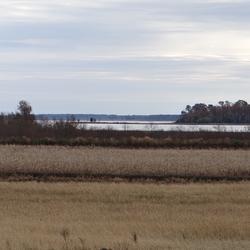Natural Disaster Preparedness Starts with Science
The USGS Coastal and Marine Hazards and Resources Program provides information needed to protect coastal communities
Helping Our Neighbors: USGS Surveys Primary Drinking Water Source for the Town of Falmouth
Woods Hole Coastal and Marine Science Center Newsletter: June-July 2025
Sharing science stories, popular social media posts, recent publications, fieldwork activities, and more center happenings.
Sound Waves Newsletter
Explore coastal and marine science from across the USGS in Sound Waves.
USGS Seafloor Mapping Provides the Scientific Foundation Needed to Address National Priorities
USGS Coastal Landscape Change Products Help the U.S. Department of Defense Safeguard Military Infrastructure Along the Coast
We Make Treasure Maps: USGS Charts the Seafloor to Help Locate Critical Minerals, Precious Metals, and Other Vital Resources
Valuable Data Collected on M7.0 Earthquake Offshore Cape Mendocino, California
Successful deployment and retrieval of Rapid Response Ocean Bottom Seismographs represents significant advancement in natural hazards research
Approaching Storms
Discover USGS tools that forecast storms and report coastal conditions for emergency management
Woods Hole Coastal and Marine Science Center
We study extreme events and physical, biological, and chemical processes that shape our coastal and marine environments. Using this information, we identify hazards and provide critical information on our Nation’s resources. Our research and science-based products provide the strong scientific foundation needed by decisions makers, scientists, and state and federal agencies to address public safety, national security, and resource management across our Nation’s coastal and submerged lands.
Highlights
- Sound Waves: Coastal and Marine Research News from Across the USGS
- Woods Hole Coastal and Marine Science Center Newsletter
- Annual Reports and General Information Product
- Woods Hole Coastal and Marine Science Center Field Activities
- Employment Opportunities
- Featured USGS Series Report
- Decadal Science Strategy






